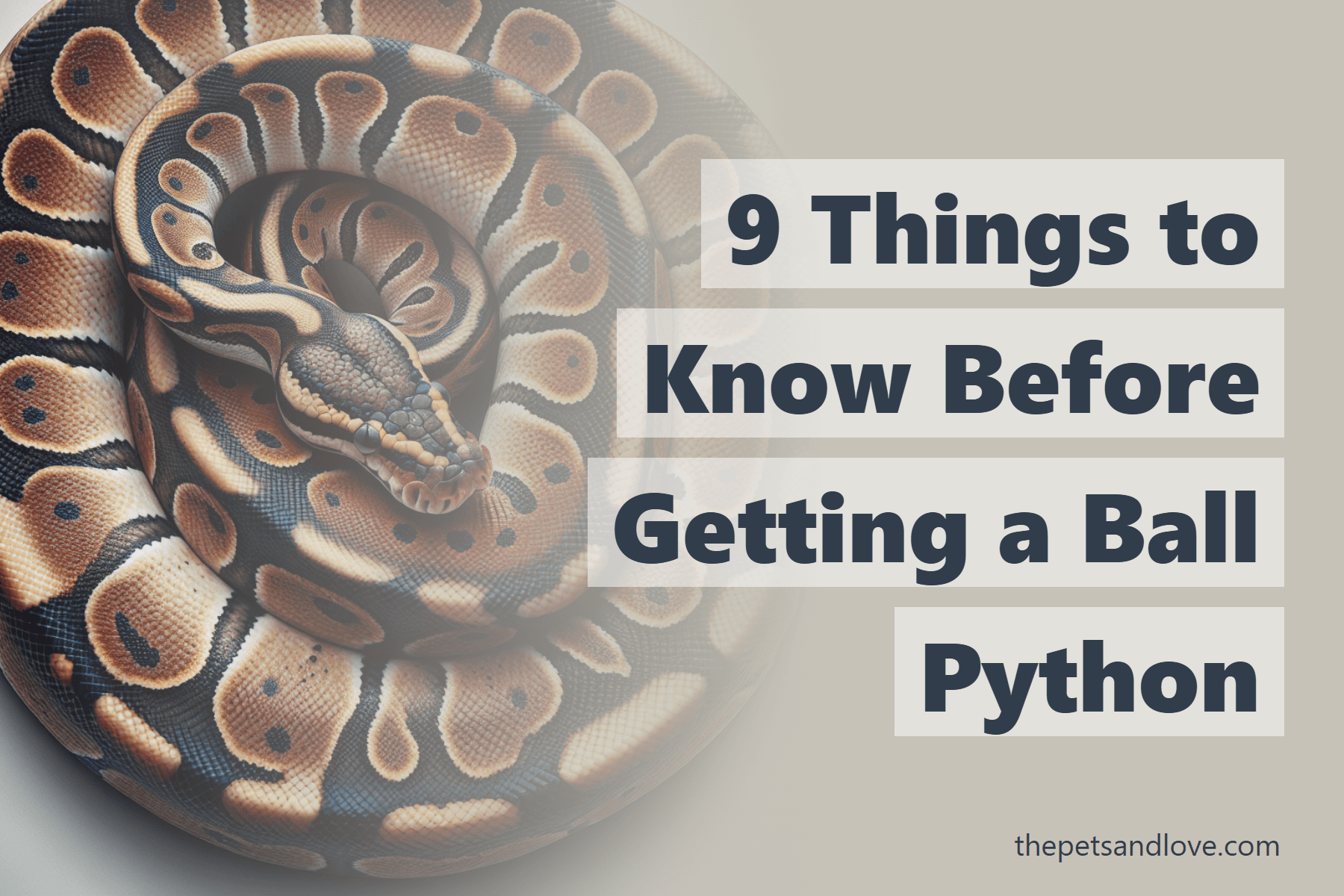9 Things to Know Before Getting a Ball Python

Thinking about getting a pet snake? If you're new to reptiles or just want a low-maintenance companion with a calm temperament, it’s hard to beat the ball python. I’ve always thought of them as the “starter snake” — not because they’re boring (they’re not!), but because they’re manageable, beautiful, and full of personality.
Here’s what you should know before bringing one home — the good, the tricky, and how to set yourself up for success.
Why Ball Pythons Make Great Pets
Ball pythons are non-venomous and naturally shy, which makes them a safer and friendlier choice for beginners. They’re known for curling into a tight ball when they feel stressed — hence the name — rather than striking out. That docile nature is a big plus if you’re new to handling snakes.
They also come in a stunning variety of colors and patterns (called “morphs”), so whether you like subtle or flashy, there’s likely a ball python that fits your style.
Handling and Temperament
Compared to other snakes, ball pythons tend to tolerate handling really well — especially if you start slow and stay consistent. I always recommend using a snake hook or tap training at first, just so your python learns the difference between “feeding time” and “hangout time.” It helps reduce stress and accidental bites.
Long-Term Commitment
This is not a short-term pet. With proper care, ball pythons can live 30 to 40 years — some even longer. The record is over 47 years! So if you’re thinking about getting one, make sure you’re ready for that kind of commitment. Think of it like adopting a reptile roommate for life.
Size Differences
Males usually stay smaller, around 2 to 3 feet, while females can grow 4 to 5 feet long. It’s something to consider if space is a concern (or if you’re hoping for a slightly more impressive display).
Feeding Needs
One of the perks? Adults can go weeks between meals. Here’s a quick general rule:
- Hatchlings: every 5–7 days
- Juveniles: every 7–14 days
- Adults: every 2–4 weeks
That said, ball pythons are famously picky eaters. Some go on “hunger strikes” for months. If that happens, don’t panic — but do monitor their weight and talk to a reptile vet if needed. Also, stick with frozen-thawed prey. Live prey can injure your snake and make them more aggressive.
Challenges to Be Aware Of
Ball pythons are easier than many reptiles, but they’re still snakes — and they need specific care to stay healthy.
1. Environmental Needs
You’ll need to maintain proper temperature and humidity. That means:
- Warm side: 80–85°F (27–30°C)
- Cool side: 75–80°F (24–27°C)
- Basking spot: 88–92°F (31–34°C)
- Humidity: 55%–60%
A good thermometer and hygrometer are non-negotiable. If you’re not consistent, your snake could stop eating or develop health issues.
2. Setup Costs
The initial setup isn’t cheap. You’ll need:
- A secure tank (at least 40 gallons for adults)
- Heat sources (basking bulb or ceramic emitter, plus a nighttime heat source if needed)
- UVB lighting (some use mercury vapor bulbs)
- Substrate (as simple as paper towels or as fancy as a bioactive mix)
- Hides, humidity box, water bowl, spray bottle, etc.
Once the setup’s done, ongoing costs are fairly low — mostly food, electricity for heating, and occasional substrate changes.
Is a Ball Python Right for You?
If you’ve got the patience to learn and commit, ball pythons can be super rewarding pets. They’re not ideal for households with small kids or grabby pets, just because accidents can happen. But for anyone who wants a quiet, fascinating animal that doesn’t need constant attention? They’re awesome.
Before you bring one home, take time to research, prep your setup, and find a reputable breeder or rescue. A little planning goes a long way — and your future snake buddy will thank you for it.
Happy herping!
